Confederate State Government
Tennessee officially joined the Confederacy in June 1861, becoming the tenth and last southern state to withdraw from the Union.
Tennessee’s political leaders had to decide which side they would support. Governor Isham Harris, who had pushed for secession, and many of the state legislators stayed in their positions, only now they were Confederate leaders.
Others, mostly from East Tennessee, decided to stay with the Union. One of the state’s U.S. Senators, A.O.P. Nicholson resigned his post. The other, Senator Andrew Johnson, chose to continue in the U.S. Senate. Read more about Andrew Johnson and secession.
U.S. Representative Thomas A.R. Nelson tried to keep his federal seat, but was arrested by Confederate forces in Tennessee before he could return to Washington D.C.
Realizing that Tennessee was in a strategic location, Gov. Harris urged the legislature to pass the Provisional Army of Tennessee Act. This act would enlist 55,000 men and create a $5 million war bond.
Dig Deeper: What is a war bond?
Harris also had the state begin work on Fort Henry and Fort Donelson to protect the approach to Nashville on the Cumberland River. But the loss of these forts to Union troops led by Gen. Ulysses Grant in February 1862, put the state government officials and citizens of Nashville into a panic.
Certain that Union troops would be marching into the city at any time, the state officials packed up what they could and fled to Memphis. The legislature met there until March, 1862, and then adjourned. By June of that year, Memphis too fell into Union hands. For all purposes, Confederate state government ceased to exist in Tennessee.
Picture Credits:
- “Hoisting the Stars and Stripes over the Post Office, Memphis” a sketch by Alexander Simplot, an artist who traveled with the Union Army. Dated July 5, 1862. New York Public Library, Digital Collection
- “A carte-de-viste (type of photograph) of Andrew Johnson. Tennessee State Museum Collection, 81.72.1D
- “Painting of Isham G. Harris by Washington B. Cooper. Tennessee State Museum Collection, 76.43
- Drawing of Union cannon on the west front of the State Capitol by Walton Taber. It was done for Century Magazine from a photograph by George Barnard showing the same scene.
Civil War and Reconstruction >> Civil War >> A Divided State >> Confederate State Government
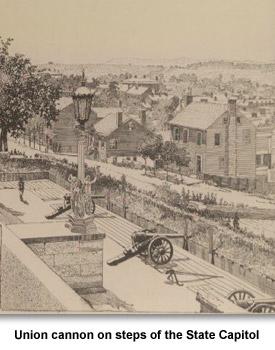
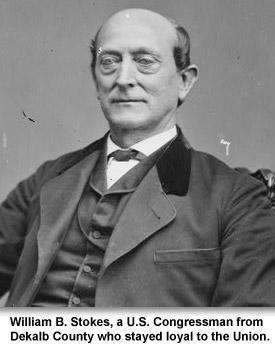
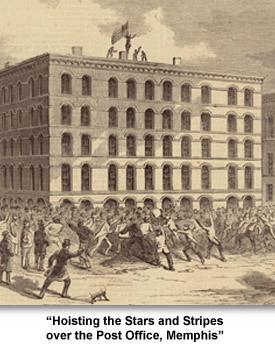
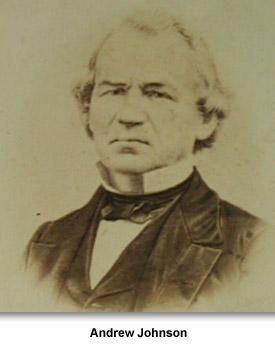
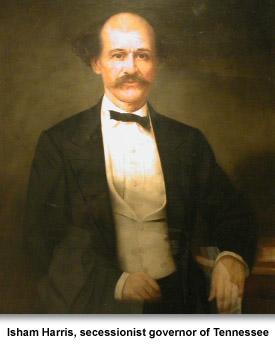
 Sponsored by: National Endowment for the Humanities
Sponsored by: National Endowment for the Humanities